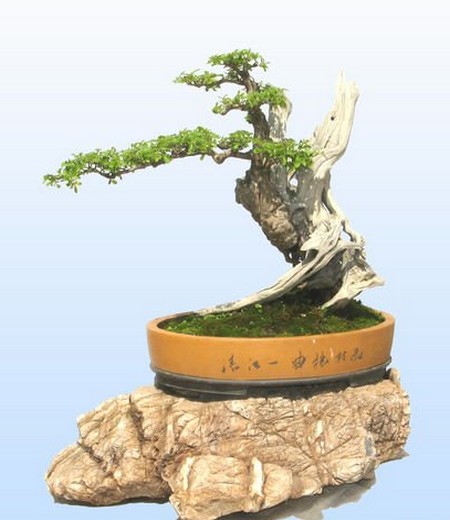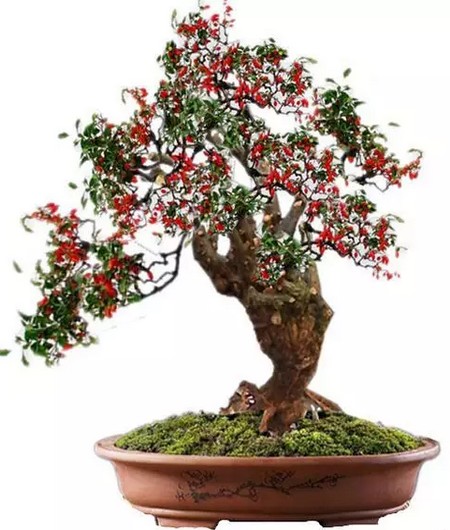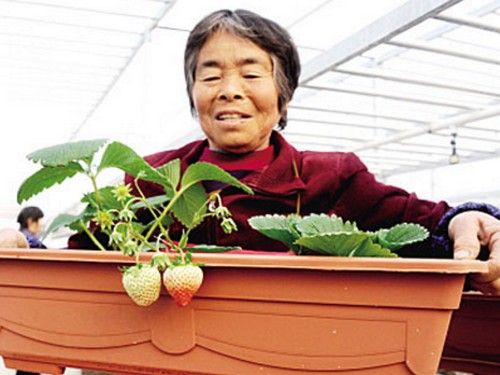The making method of Bauhinia bonsai
Vitex negundo, deciduous shrub or small tree, Verbenaceae, Vitex genus, there are about 200 species, Vitex negundo is one of them. Vitex negundo is a good tree species for making and cultivating bonsai. Vitex negundo can be used to make many kinds of tree stump bonsai, especially for straight stem type, inclined stem type, curved stem type, horizontal stem type and pictographic bonsai. Modelling should be done according to the material and the situation. In the early stage of cultivation, the main method was to tie and pull, supplemented by pruning; in the later stage, the main method was pruning, supplemented by tie and pull. Today I want to share with you the production method of Huangjing bonsai:

Pile mining:
There are many wild Vitex negundo trees, which are easy to obtain. The production of bonsai generally goes to the barren hills to dig or buy old piles with good tree shape and root shape in the market. Quarrying Vitex negundo is generally carried out in March and April in spring. If the root soil can be kept, it can be dug and planted in spring, summer and autumn.
Planting:
Vitex negundo adaptability is very strong, the requirements of the soil is not strict, potted Vitex negundo, loose texture, good moisture permeability of humus soil is better, planting pots to soil pots or cement pots is appropriate. Before planting, cut off the wounded roots and excessive roots, cut off the steep branches and overcrowded branches. Vitex negundo has strong adaptability and germination, and can be planted whenever and wherever. But the most suitable or in spring March, when digging, it is best to bring more soil, try not to hurt the fine roots.
Watering:
Vitex negundo drought tolerance, after the pot should also be timely watering, not dry irrigation, irrigation will be watered thoroughly, usually to spray less water to the leaves, otherwise it will make the leaves bigger, affecting the appearance. After planting, it should be watered once, pay attention to shade, and plant it on the ground to build a shed for shade. Want to make yellow thorn early exposure root, watering intentionally put the spout on the root watering, day after day, and then washed by rain, knot Qiu Qu old root gradually revealed in the basin surface.
Fertilization:
Vitex can bear barren, spring, summer and autumn can apply a thin fertilizer solution. Avoid excessive fertilizer, otherwise, it will cause excessive branches and leaves, will destroy the tree shape. Before negundo pile scene is not formed, fertilization should be frequent, except in rainy days, thin decomposed cake fertilizer water should be poured once a week, avoid thick fertilizer burning roots, affecting growth. After molding, fertilizer should be controlled. Generally, it should be applied once in spring and summer, and once again in autumn, so as to avoid excessive fertilizer and water, cause excessive growth, disturb tree shape and affect viewing.
Trim:
The pruning and sawing of old piles should be cautious. The length of branches and sawing should be carefully observed and pondered to determine the best shape posture. Trunk and branches, branches and branches between the pruning to observe all sides, carefully examined, and so on when ready to start pruning.
Because the branches of Vitex negundo are thick and hard, it is not easy to climb, bend with artificial modeling, and should be pruned according to the tree potential. For example, natural yellow wattle old piles, some old dragon bell, some branches Qiu Qu, some xylem has rotted, but the bark is still alive, and issued new green leaves. For such a form, the slightest neglect of pruning can cause irreparable damage. Therefore, pruning should be guided by circumstances, according to the tree shape, tree potential for careful pruning. Trunk or thick branches on the saw cut, to leave branches, transition natural. Otherwise, the fine lateral branches extending from the thick trunk or branch lack the intermediate transition level, and the connection is unnatural.
After the negundo pile is basically trimmed, it can be planted underground or maintained in a large basin. After the negundo on the basin, adjust the basin once a month, because negundo has phototaxis, the branches and leaves facing the sun grow faster than those facing the sun, so as not to cause partial crown.
Leaf picking:
In order to make the leaves smaller and more beautiful, in addition to controlling watering and fertilization, the leaves can be picked in early summer and early autumn. When picking leaves, all the leaves on the tree should be removed, and some parts should not be removed, which is unfavorable for the shade of new leaves and viewing. After picking leaves, strengthen fertilizer and water management, and new leaves can germinate in about 20 days. The regenerated leaves are half as small as the original ones. If you master the habits of Vitex negundo, you can pick leaves many times a year, so that the leaves growing are small and green, and you can see that they are full of vitality and prosperity.
Styling:
In the process of growth, Vitex negundo should be controlled to grow too fast and continue to be shaped. During the growth period, attention should be paid to frequently picking the heart and removing too many new buds from germination to avoid destroying the original shape. If you want to make up for the defects of the original shape, you can keep buds properly at the defective places.
It is best to complete the shape of the branches at the beginning, because the old branches are thick and hard, and then reshape, it is difficult to twist and twist. For root pruning, thick roots should be truncated. Because after the pile survives, the root mostly from the kerf shade hair, thick root such as too long will also affect the loading basin. The sawing length of thick roots should be determined according to the tree potential and tree shape. If the tree is inclined and dry, the thick roots extending to one side can be slightly longer for the long pots to be installed in the future, which can highlight the root type beauty of the packing exposed claws for the later pots, and also play a role in fixing the pots for the later stumps. The principle of Jingzhu modeling is: pruning is the main, panza is the auxiliary, according to the material, according to the situation, modeling in turn.
Time: 2019-05-26 Click:
- Prev

How to make Chinese wolfberry bonsai
Spring, a season of recovery of all things, people want to raise several pots of flowers in this season, not only beautify the home, but also edify the sentiment, and bonsai is one of the best, but the price is naturally expensive, have you ever thought of making a bonsai yourself? Lycium barbarum is a specialty of Ningxia. In ancient times, it was one of the bonsai Rocks of Eighteen Scholars.
- Next

The method of making strawberry bonsai
Yesterday morning, Xu Peiying, a member of the professional cooperative of Haifeng Farm, showed the strawberry bonsai they planted. The cooperative has planted more than 3000 pots of strawberries in the seedling raising greenhouse. At present, the strawberries in the bonsai have begun to blossom and bear fruit, and the whole greenhouse exudes a faint sweet smell. According to introduction
Related
- Fuxing push coffee new agricultural production and marketing class: lack of small-scale processing plants
- Jujube rice field leisure farm deep ploughing Yilan for five years to create a space for organic food and play
- Nongyu Farm-A trial of organic papaya for brave women with advanced technology
- Four points for attention in the prevention and control of diseases and insect pests of edible fungi
- How to add nutrient solution to Edible Fungi
- Is there any good way to control edible fungus mites?
- Open Inoculation Technology of Edible Fungi
- Is there any clever way to use fertilizer for edible fungus in winter?
- What agents are used to kill the pathogens of edible fungi in the mushroom shed?
- Rapid drying of Edible Fungi

